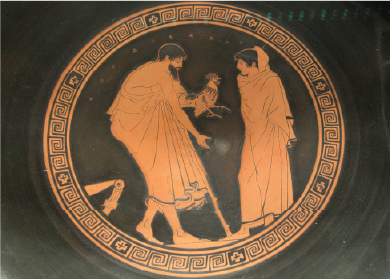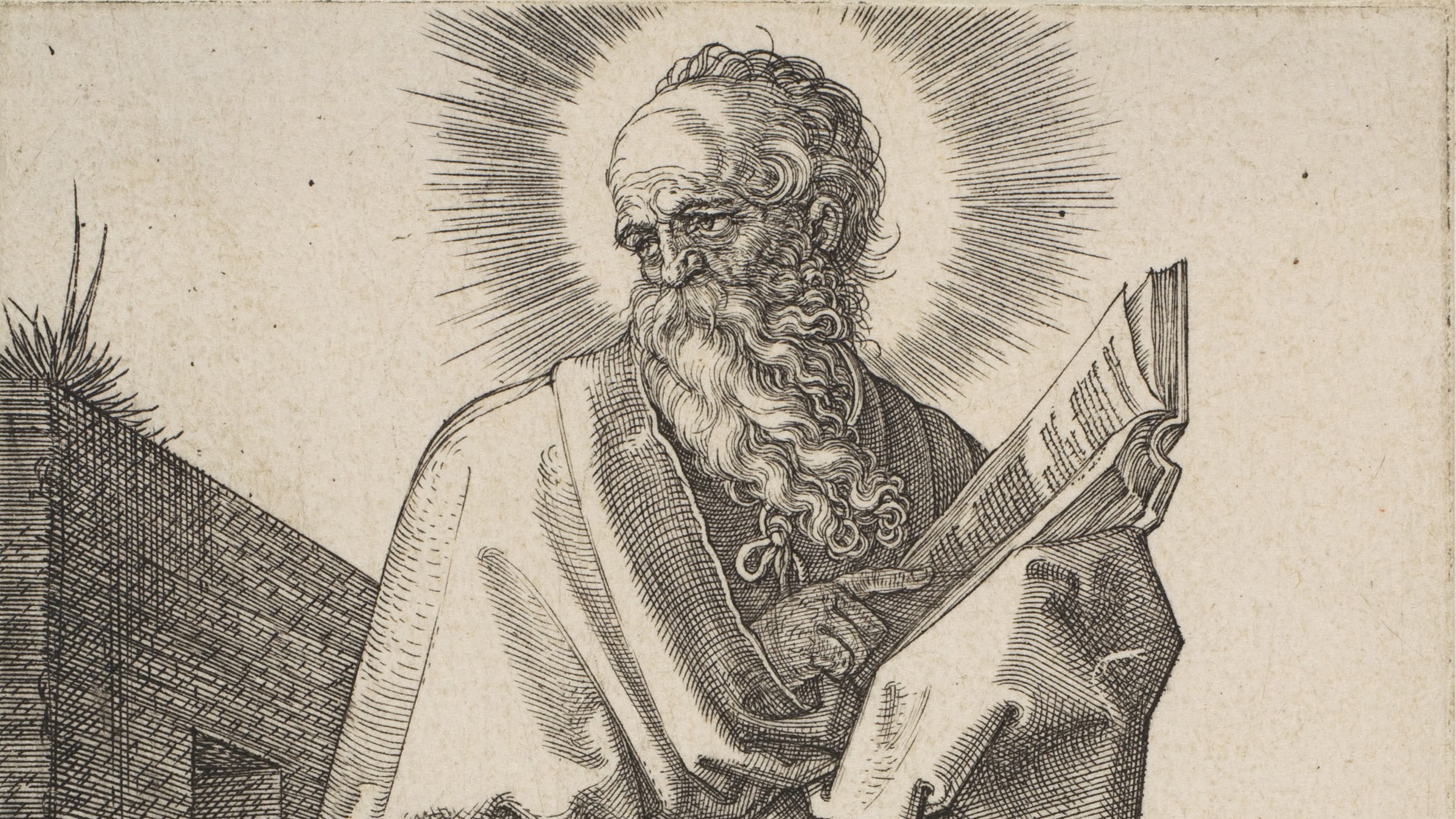Biblical interpretation has traditionally been a male, heterosexual enterprise. As society has increasingly acknowledged and accepted a spectrum of genders and sexualities beyond being cis-gender and heterosexual, biblical interpreters sought to uncover the roles biblical texts play in shaping the experiences of those who identify along this spectrum. This range of identities, signaled through the acronym LGBTQ+ (or some other similar collection of letters), includes people who are lesbian, gay, bisexual, transgender, queer, as well as a growing number of other sexualities and gender identities (suggested by the “+”).
While many biblical interpreters engaged in LGBTQ+ interpretation identify as such, there are also interpreters who do not identify as LGBTQ+ who are committed to this type of interpretation, which includes uncovering the roles biblical texts play in shaping LGBTQ+ experiences in today’s world and finding ways these texts can be meaningful and even affirming for those within LGBTQ+ communities.
What interpretive strategies do LGBTQ+ biblical scholars use?
Early LGBTQ+ interpretation focused primarily on challenging heterosexist and cis-normative readings of a collection of biblical passages commonly called the “clobber passages” (e.g., Gen 19:1–11; Lev 18:22; 20:13; Rom 1:26–28; 1 Cor 6:9–10; 1 Tim 1:9–10). These texts, from both the Hebrew Bible and New Testament, have been read in ways that condemn same-gender sex. LGBTQ+ interpreters typically encourage placing these passages in their historical contexts. They remind readers that modern assumptions about sexual identities are not easily applicable to ancient settings. Thus, clobber passages should not be read as though they refer to modern identities.
LGBTQ+ scholars also disarm the clobber passages by highlighting how they fit (or don’t fit) within their literary contexts. For example, some of the supposed references to homosexuality or queer identity in the New Testament appear in the so-called vice lists (e.g., 1 Tim 1:9–10). These passages list stereotypical bad behaviors, but they are not thoughtful discussion about sexual ethics, and the behaviors they condemn are not always clear. Likewise, some references to same-sex behavior appear in texts addressing other topics. For example, reference to the same-sex behavior of the men of Sodom (Gen 19:5) appears within a larger story in Genesis (Gen 19:1–11) that is primarily about people’s unwillingness to care for those in need or a failure to accommodate strangers (see Isa 1:10–17). Since these texts are not carefully considered discussions of same-sex relationships, their relevance to the lives of LGBTQ+ people today is questionable.
A second strategy employed by LGBTQ+ interpreters is looking for biblical figures and relationships that resonate with queer experience. These characters, who are overlooked or interpreted as heterosexual figures in traditional biblical interpretation, challenge the assumption that heterosexuality is the only natural and good sexual identity. Some of these include the love relationship between David and Jonathan (1 Sam 18:1–4; 2 Sam 1:26), the commitment made to Naomi by Ruth (Ruth 1:16–17), and the relationship between Jesus and the “disciple whom he loved” in the Gospel of John (e.g., 13:23; 19:26–27). Many LGBTQ+ interpreters claim these characters as part of queer history, and some find comfort in their stories being woven into scripture as it affirms that queerness is part of God’s creation.
Many LGBTQ+ interpreters who explore these hidden histories recognize a tension between this strategy and the fact that modern ideas about sexuality are out of place when reading ancient literature. They stress that readers need to pay attention to the way possible queer characters replicate ancient power hierarchies and assumptions. For example, the story of a Roman centurion’s request that Jesus heal his pais is sometimes read as a story of a man’s love for a young partner or boyfriend (Matt 8:5–13; Luke 7:1–10). However, the Greek term pais, often translated as “servant” or “boy,” likely refers to one enslaved by the centurion. Regardless of the centurion’s concern, the pais would have been considered sexual property in the ancient world. This story reveals an often-overlooked history, but it is most likely a history of domination and coercion. For some LGBTQ+ readers, stories like this call readers to question the ways gay men and lesbians, especially those with privilege, can themselves be involved in other forms of oppression.
Additionally, the word queer can also be used as a verb to refer to a process by which something is questioned, interrogated, or troubled. Queering biblical texts can involve questioning how ancient authors present the experiences of their characters as neatly fitting heterosexual norms. For example, queering the story of Jesus’s birth might involve rereading Mary’s responses to Gabriel in Luke 1. Perhaps Mary is not as perplexed as Luke claims and her question, “How can this be, since I am a virgin?,” isn’t naïve. Maybe Mary is relieved to be giving birth without having had sex with a man or without having had sex at all. Jesus’s birth could be an affirmation of Mary’s queerness and/or asexuality.
Likewise, LGBTQ+ interpreters sometimes challenge the heterosexist assumptions other modern readers bring to biblical texts. For instance, Eric A. Thomas questions commentators who assume the “dogs” outside the New Jerusalem (Rev 22:15) is a reference to gay men. Instead, Thomas underscores how being outside of the New Jerusalem actually aligns a person with Revelation’s author, John, who experienced his vision as an outsider on the island of Patmos. Outsider status is claimed as a privileged position. Even though LGBTQ+ interpretation has grown considerably over the past twenty years, there are still queer identities and experiences (e.g., asexuality, ethical non-monogamy) that have yet to be brought into conversation with the biblical texts. Additionally, many biblical texts and traditions have yet to be read with queer interpretive lenses.
Bibliography
- Brintnall, Kent L. “Queer Studies and Religion.” Critical Research on Religion 1.1 (2013): 51–61.
- Goss, Robert, and Mona West. Take Back the Word: A Queer Reading of the Bible. Pilgrim Press, 2000.
- Hornsby, Teresa, and Deryn Guest. Transgender, Intersex, and Biblical Interpretation. SBL Press, 2016.
- Marchal, Joseph A. “LGBTIQ Strategies of Interpretation.” Pages 178–96 in The Oxford Handbook of New Testament, Sexuality, and Gender. Oxford University Press, 2019.
- Thomas, Eric A. “The Futures Outside: Apocalyptic Epilogue Unveiled as Africana Queer Prologue.” Pages 91–112 in Sexual Disorientations: Queer Temporalities, Affects, Theologies. Fordham University Press, 2018.





